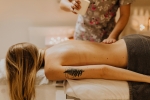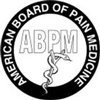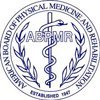Home »
Blog » Physical Therapy
| Stem Cell, PRP, Acupuncture in Queens & Long Island, New York
Physical Therapy | Stem Cell, PRP, Acupuncture in Queens & Long Island, New York
Tennis elbow, medically known as lateral epicondylitis, is a common condition that causes pain and discomfort in the outer part of the elbow. Despite its name, tennis elbow doesn’t only affect tennis players. It’s a condition that can impact anyone who performs repetitive arm and wrist movements, such as painters, plumbers, or even office workers. This article explores the nature of tennis elbow, its causes, symptoms, and treatment options, focusing on how interventional pain management can provide relief and restore functionality.
Read more
Golfer's elbow, medically known as medial epicondylitis, is a condition characterized by pain and inflammation on the inner side of the elbow. This ailment results from overuse or repetitive stress, leading to microtears in the tendons that attach to the medial epicondyle—the bony prominence on the inside of the elbow. While commonly associated with golfers, this condition can affect anyone engaging in activities that involve repetitive wrist and forearm motions.
Read more
What Are Elbow Sprains and Strains? An elbow sprain involves stretching or tearing the ligaments—the tough bands of tissue connecting bones—within the elbow joint. This typically occurs due to a sudden force, such as a fall onto an outstretched hand or a direct blow to the elbow. Conversely, an elbow strain refers to an injury of the muscles or tendons around the elbow, often resulting from overuse or excessive stretching.
Read more
Olecranon bursitis, commonly known as "student's elbow," is an inflammation of the bursa located over the olecranon process at the elbow's tip. This condition can cause pain, swelling, and limited elbow movement, affecting daily activities and quality of life. Interventional pain management offers effective strategies to alleviate symptoms and address the underlying causes of olecranon bursitis.
Read more
Chiropractic adjustment (spinal manipulation) of the cervical spine is usually accomplished with the patient either lying down on his or her back or in a seated position. Alternatively, the patient may be placed in a prone position (lying face down), an approach often used in lower cervical/upper thoracic vertebral and rib/vertebra ("costovertebral") joint manipulation.
Read more
Chiropractic manipulation can address several causes of neck pain. It is not a treatment for every type of neck problem, but on the other hand, is also considered a first line of treatment for many. Two typical causes of pain that originate in the neck and may be treated by manipulation include mechanical neck pain and disc problems.
Read more
Stretches and exercises for neck pain can offer relief, but it’s important to assess your pain level first. Here’s a guide to help you determine whether at-home neck exercises are right for you. The phrase “pain in the neck” rings true for many people — in fact, neck pain is one of the top types of pain reported, according to the American Physical Therapy Association.
Read more
Manipulation of the cervical spine or neck region is a common technique utilized by doctors of chiropractic for many patients complaining of neck, upper back, and shoulder/arm pain, as well as headaches. Similar to the treatment for many conditions affecting the lower back, chiropractic is considered a first line of treatment for a range of cervical spine conditions.
Read more
Myofascial release (MFR) therapy focuses on releasing muscular shortness and tightness. There are several conditions and symptoms that myofascial release therapy addresses. Many patients seek myofascial treatment after losing flexibility or function following an injury or if experiencing ongoing back, shoulder, hip, or virtual pain in any area containing soft tissue.
Read more
Myofascial therapy relieves soft tissue restrictions that cause pain. Some causes of chronic myofascial pain or low back pain are easier to diagnose than others: trauma (such as a car accident or fall), cumulative posture misalignment or mechanical deficits, a compressed nerve from a herniated disc, or inflammatory conditions.
Read more
Love this Post? Spread the World






















